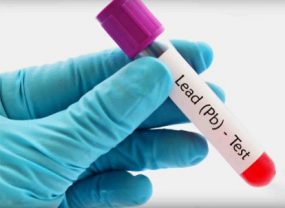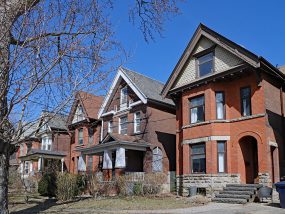Know the Facts
Protect Your Child from Lead Exposure
Exposure to even small amounts of lead can harm your child. Children younger than 6 years of age are most vulnerable to lead poisoning. If you are pregnant or breastfeeding, lead can harm your baby. This fact sheet provides information that can help you protect your child from lead exposure.
FACT: Lead exposure can cause lifelong health problems.

Lead exposure harms several body systems including the brain, nervous, and reproductive systems and results in
- Developmental and growth delays
- Hearing and speech problems
- Difficulty learning and paying attention
- Serious illness and death
More information is available on the Health Effects of Lead Exposure web page.
FACT: A blood lead test is the best way to know if your child has been exposed to lead.

Most children exposed to lead do not appear to be sick. Talk to your child’s healthcare provider about getting a blood lead test. For children ages 1–5 years, consider getting them tested for lead if they
- Live in a home built before 1978
- Receive Medicaid services
- Are an immigrant, refugee, or adopted from another country (Please note that CDC recommends all refugee children be tested upon arrival and several months after resettling into their new home. For more information on lead exposure regarding refugees and newcomer persons, visit the Refugees and Other Newcomer Persons web page.)
- Live near a known source of lead, such as a lead smelter or mine.
Based on your child’s blood lead level, your healthcare provider can recommend what to do next. Visit CDC’s Recommended Actions Based on Blood Lead Level web page for more information.
Protect Your Child from the Harmful Effects of Lead from the Most Common Sources
1. Have your home inspected for lead if it was built before 1978.

If you rent, ask your landlord to have the home inspected or to share results of recently conducted inspections.
If you own your home, have it inspected by a certified lead inspector. Visit the Environmental Protection Agency’s (EPA’s) Locate Certified Inspection, Risk Assessment, and Abatement Firms web page to locate one.
By getting your home inspected for lead, you can find out if lead is present and take steps to remove it.
2. If lead is present in your home or soil at levels above EPA standards, get your children tested for lead. Then, make your home lead safe by taking the steps listed below.

Visit the Hazard Standards and Clearance Levels web page to review EPA standards.
- If you rent, ask your landlord to have lead hazards removed from your home.
- If you own, contact a certified lead abatement specialist to address the hazard. To locate one, visit the EPA’s web page.
- Clean floors, window frames, windowsills, and other surfaces regularly to reduce leaded dust. Use a mop or sponge with warm water and an all-purpose cleaner. Remember, never mix ammonia and chlorine (bleach) products together because they can form a dangerous gas.
- Use soap and water to wash children’s hands and toys often, especially before they eat and sleep.
- Leave shoes by the door or outside.
- Cover bare soil with grass, mulch, or wood chips and prevent children from playing in bare soil that may be contaminated with lead. See the Lead in Soil web page for more information.
3. If you are repairing or renovating a home built before 1978, take steps to do so safely.
Repairs and renovations in homes built before 1978 can create dangerous lead dust, especially from processes such as heating, sanding, or scraping paint. Safety steps include the following:
- Keep children and those who are or may be pregnant away from areas that are being repaired or renovated.
- Ensure that anyone who repairs or renovates your home is trained in lead-safe work practices. To locate contractors certified by the EPA or a state, visit EPA’s web page.
Resources
- Lead Poisoning Prevention. Centers for Disease Control and Prevention (CDC). January 2022.
- Protect Your Family from Lead in Your Home. [PDF – 1.2 MB] Environmental Protection Agency (EPA). March 2021.
- What You Need to Know About Lead Poisoning. [PDF – 84 KB] Environmental Protection Agency (EPA). May 2014.
- Hanna-Attisha M.; Hamp N; O’Connell, L. Promise of Early Intervention for Children Exposed to Lead. Jama Pediatrics. March 7, 2022.